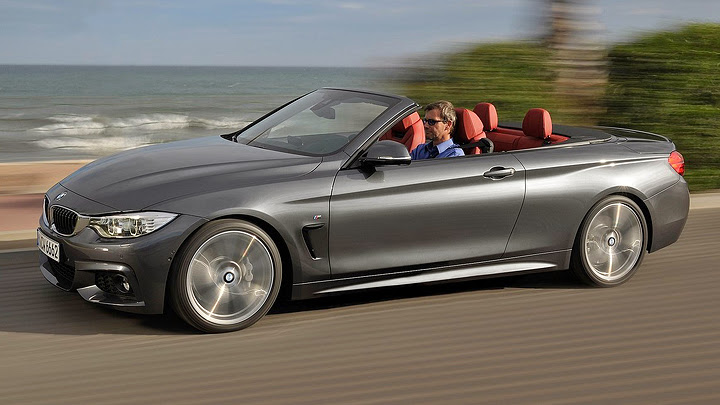
Such “division structure” established itself so naturally among so many automakers around the world because it optimizes the production, which is done through two key aspects. The first one is to group the cars according to the intended use of each body: sedans and SWs share family vocation, while SUVs are supposed to be as good at off-road tracks as any pick-up. The second is usually applied simultaneously, and consists of taking advantage of construction similarities: minivans can seat more than five only with longer wheelbase, if it’s convenient, while most hatchbacks drop or receive the rear doors changing only the sides. So far this is the most efficient strategy known for this, cost-wise.
This strategy turns interesting to analyze because the latest releases turned BMW’s lineup a great example of its application. Traditional, family-friendly models are restricted to the odd-numbered series, while the casual and sporty ones feature a series number whose division by two wouldn’t leave a remainder. Crossovers and SUVs, in spite of being able to use any number, are grouped by the letter X, as well as the brand new hybrid line started to do with the letter i. When it comes to 4-Series, therefore, it was easy to expect it would be started with a coupe and go on with its droptop companion. In some months they might be followed by X4 and their own Gran Coupé variation.








German automakers are extremely fond of developing one strong visual identity among its vehicles and execute the fewest possible changes from one to another. This is why this line doesn’t look so different from 3-Series, despite of being created precisely with that purpose. However, the new cabriolet brings the great surprise of not looking exactly like if the coupe’s roof was simply removed. It actually resembles the 6-Series bigger brother, with a long rear which helps it to look classy rather than giving high-performance feelings. But it’s interesting to notice that closing the roof leaves it much more like the outgoing 1-Series cabriolet: the three volumes receive a stronger division, which has nothing to do with the coupe’s fluid lines.
Talking about that removable roof composes one of the strongest differences between the new car and its direct rival Audi A5. BMW equipped it with an electrically-operated hardtop, which works at up to 11 mph and takes twenty seconds. Retracting it reduces the trunk from 370 L to 220 L, while its very existance gives around extra 300 kg comparing to the coupe’s equivalent versions. But the roof was triple-layer soundproofed and the front seats became slimmer, in order to maintain respectable noise levels and internal space. Besides, BMW managed to achieve 50:50 weight distribution and a 19-mm lower center of gravity, which compose interesting handling improvements.








The automaker also states the new car is 20 kg lighter than the outgoing 3-Series cabrio, even having increased in all dimensions. 4-Series Convertible, like its coupe sibling, gives the overall impression of a more mature car than its predecessor was, in many aspects. Talking about powertrain starts with mentioning the standard electric power steering and multi-link rear suspension, and ends with repeating the coupe’s three versions: they will also be matched to Luxury, Modern, Sport lines or receive the M Sport package, which is the sportiest 4-Series you can buy while the long-awaited M4 variation doesn’t make its official debut.
BMW’s countless comfort, entertainment and safety equipments can be accessed at this vehicle by 420d, 428i and 435i trims. The first one uses diesel to deliver 180 hp and 280 lb-ft and reach 55-mpg fuel consumption and 146-mph top speed. With the same weight of 1755 kg, the second also counts on a 2.0L, but consumes gasoline and offers 240 hp and 255 lb-ft, making 0-62 mph in 6s4. 435i is also direct-injected, turbocharged and limited at 155 mph, but it weighs 1825 kg and its six-cylinder 3.0L uses a second turbo to generate 300 hp and 300 lb-ft and raise the 0-62-mph time to 5s6. Both can be paired to a manual six-speed transmission or to ZF’s automatic eight-speed.
Lançamento no Brasil (18/09/2014)
Agora a BMW brasileira oferece duas opções tanto da Série 4 (a outra é o cupê) como de carros sem-teto (o outro é o Z4). A novidade chega apenas na versão 428i e com nível de acabamento Sport GP, tabelado a R$ 239.950. Ele combina o motor 2.0 turbo de 245 cv à transmissão automática de oito marchas, e deve repetir os equipamentos do irmão sedã 328i Sport GP: os destaques são bancos de couro com regulagens elétricas, central de entretenimento, navegação GPS e seletor Drive Select, além do vistoso teto rígido, que é dividido em três partes e tem acionamento elétrico feito por um botão na cabine. O modelo traz doze opções de cor para a carroceria e quatro combinações do revestimento interno em couro.
BMW 420i Cabrio (10/12/2014)
Depois da estreia com o 428i, a BMW expande a linha da Série 4 trazendo a sua versão de entrada, o 420i. Por R$ 209.950, o modelo traz ar-condicionado bizona, bancos com ajuste elétrico e memória, navegador GPS, sistema de áudio de alta fidelidade, e o kit de acessórios Sport Line. Este, por sua vez, acrescenta acabamento em Pearl Dark com detalhes em cromado Pearl Gloss, bancos em couro Sensatec, rodas de liga leve aro 18”, saídas de ar laterais e volante esportivo multifuncional. O motor é o 2.0 com turbo, injeção direta e duplo comando de válvulas, que entrega 184 cv e usa tração traseira e transmissão automática de oito marchas para acelerar de 0 a 100 km/h em 8,2 segundos.